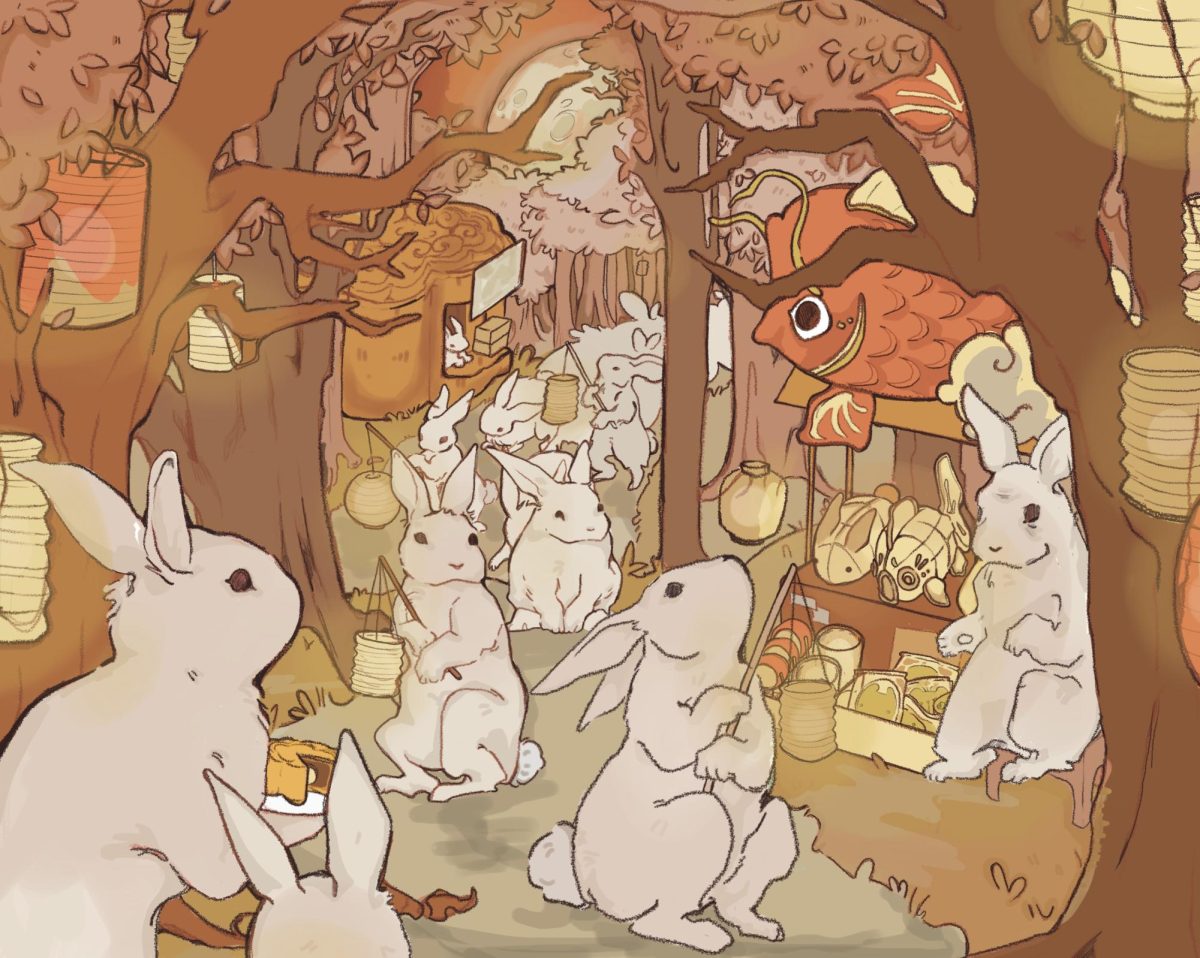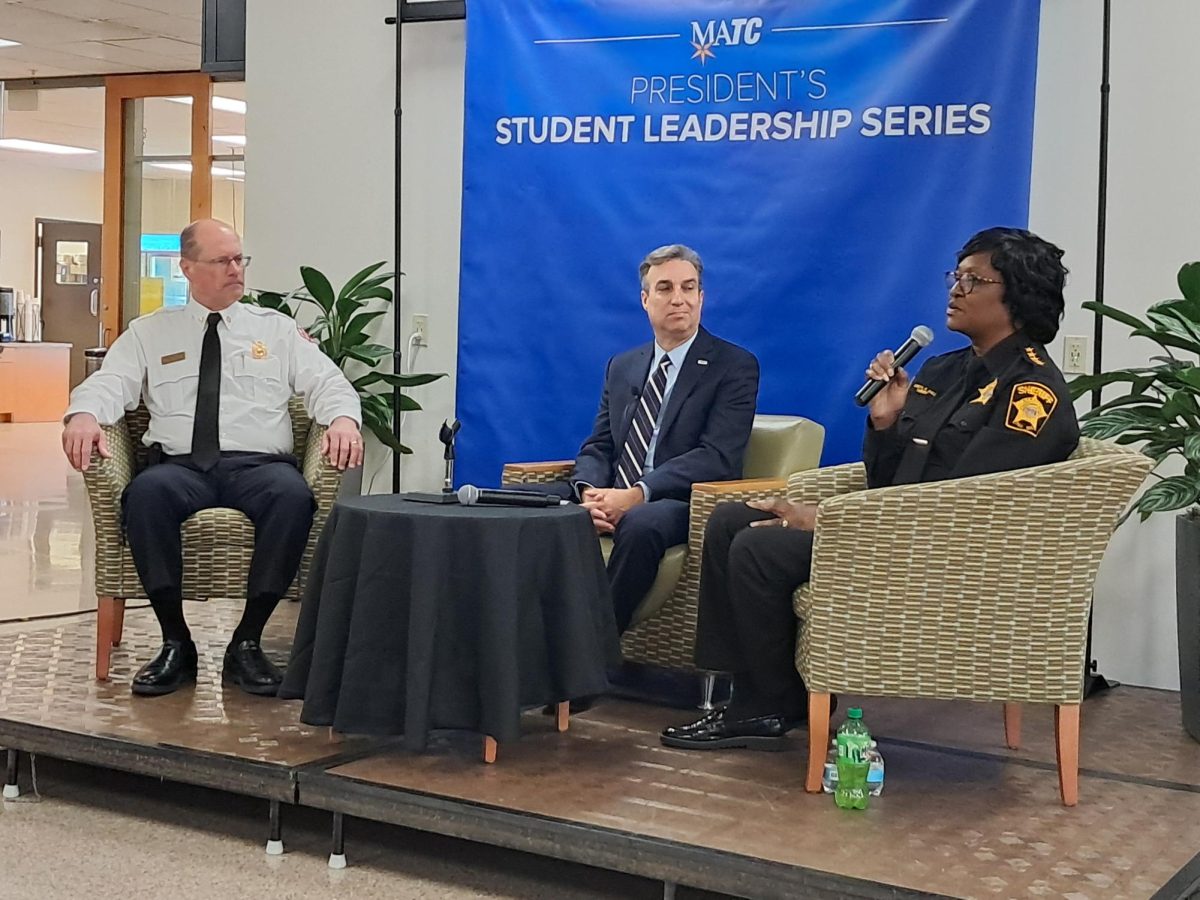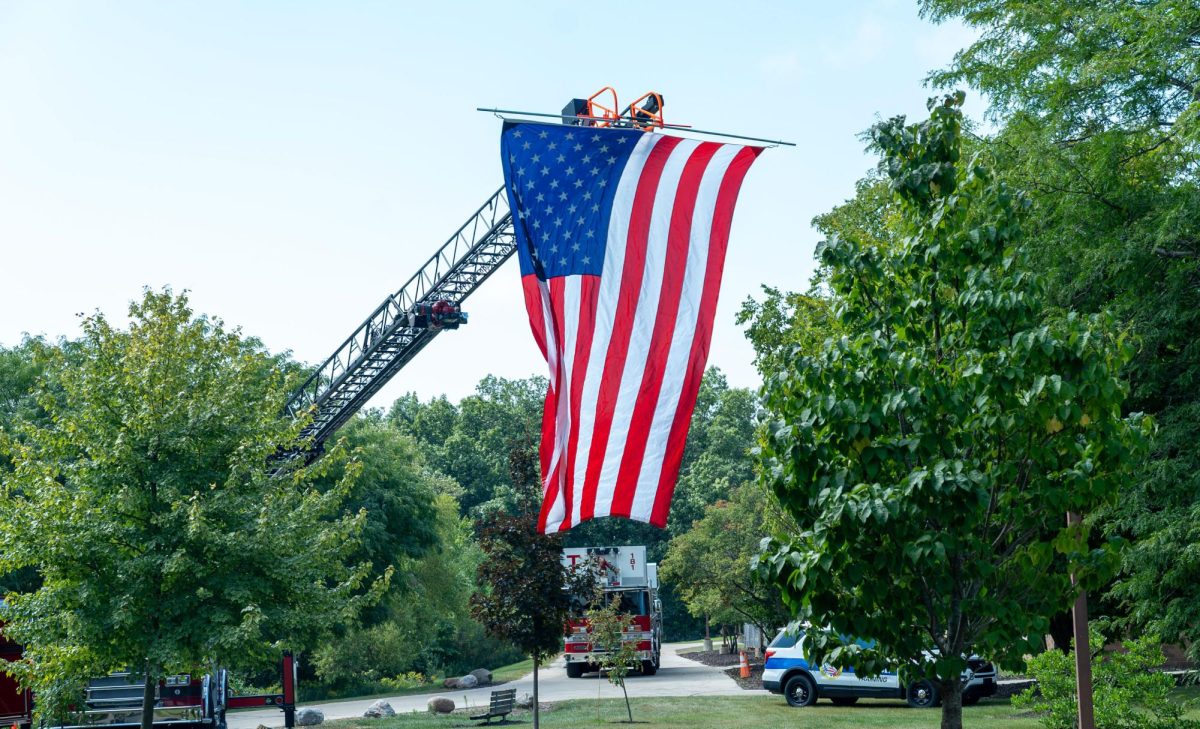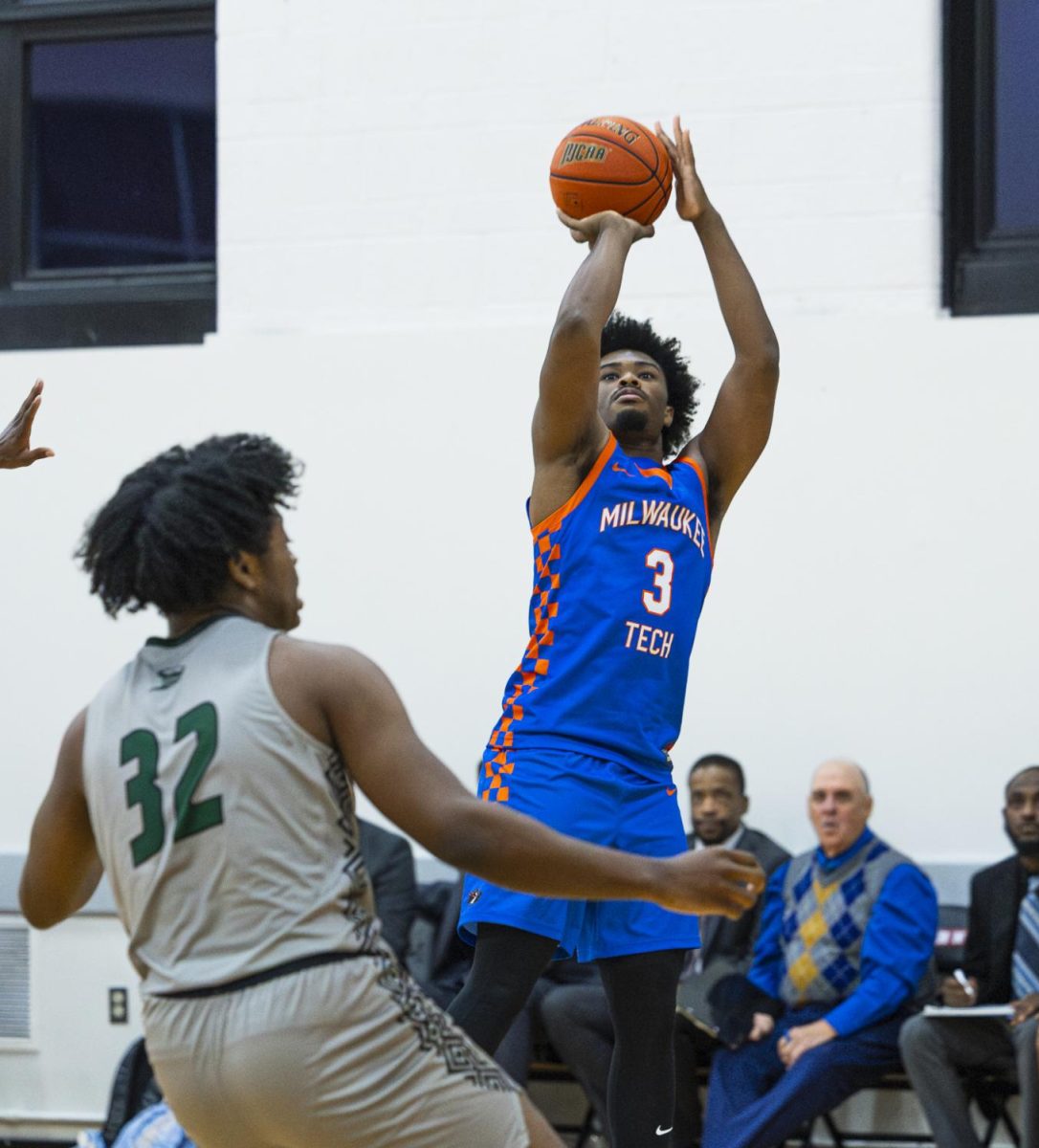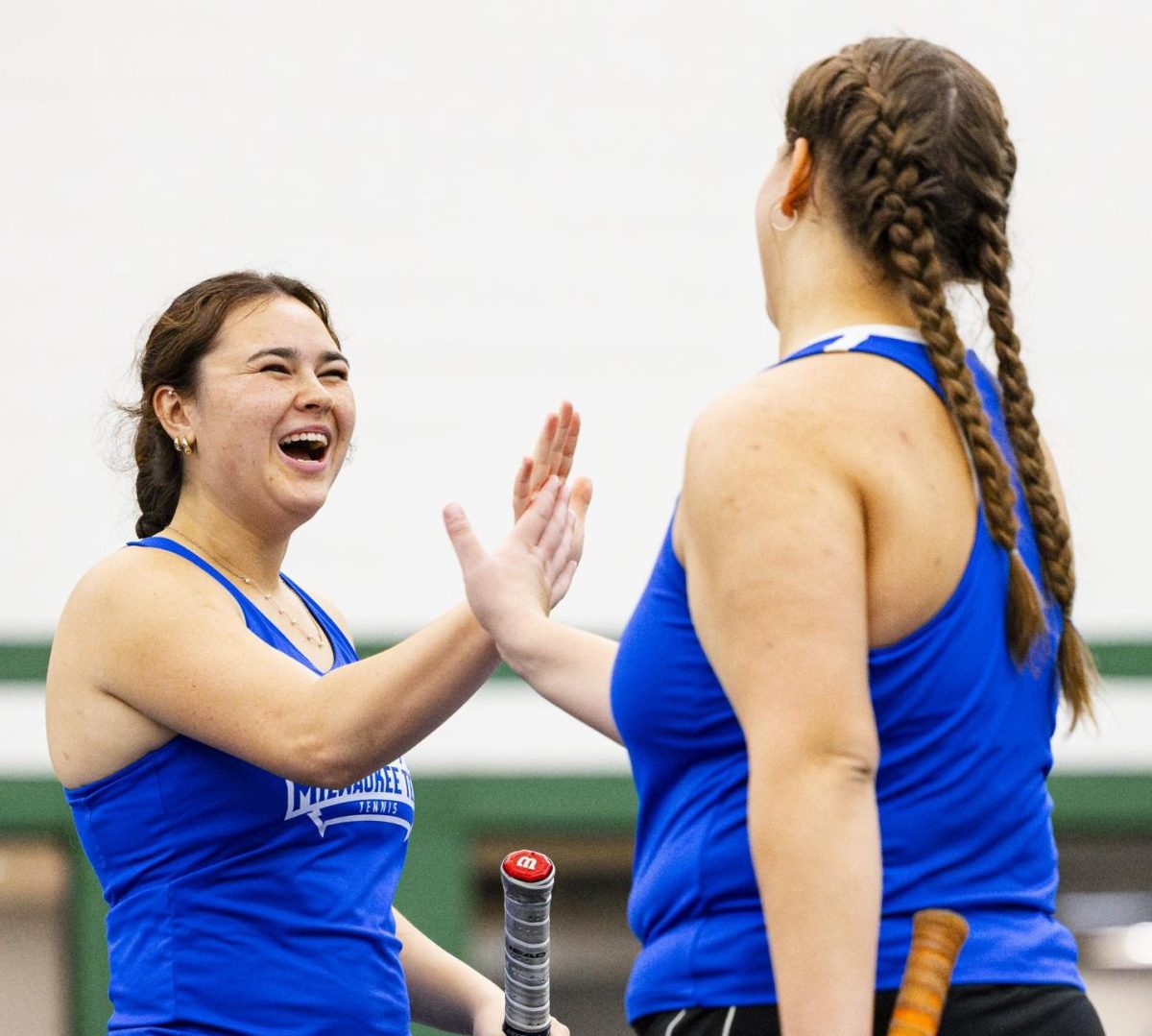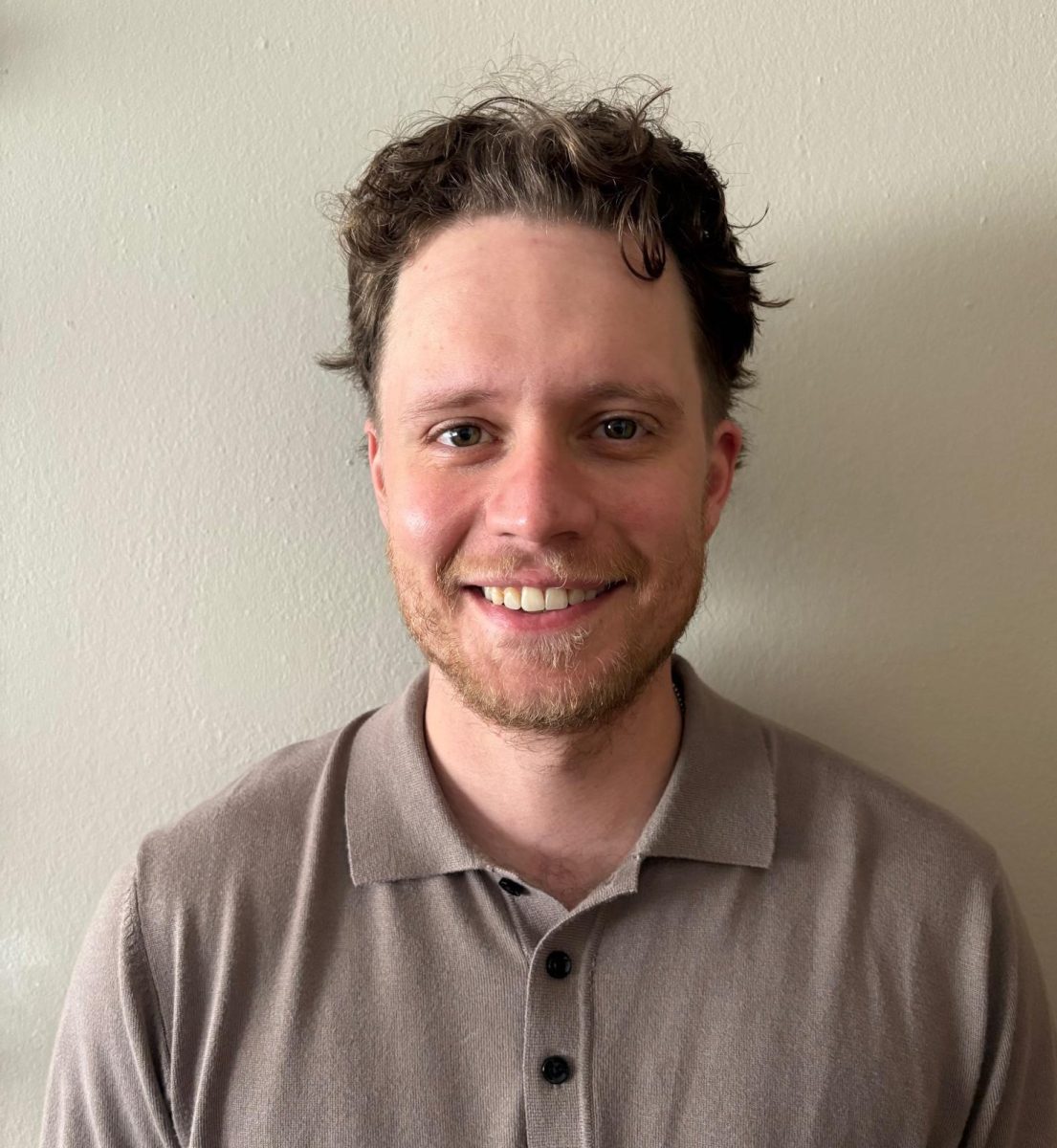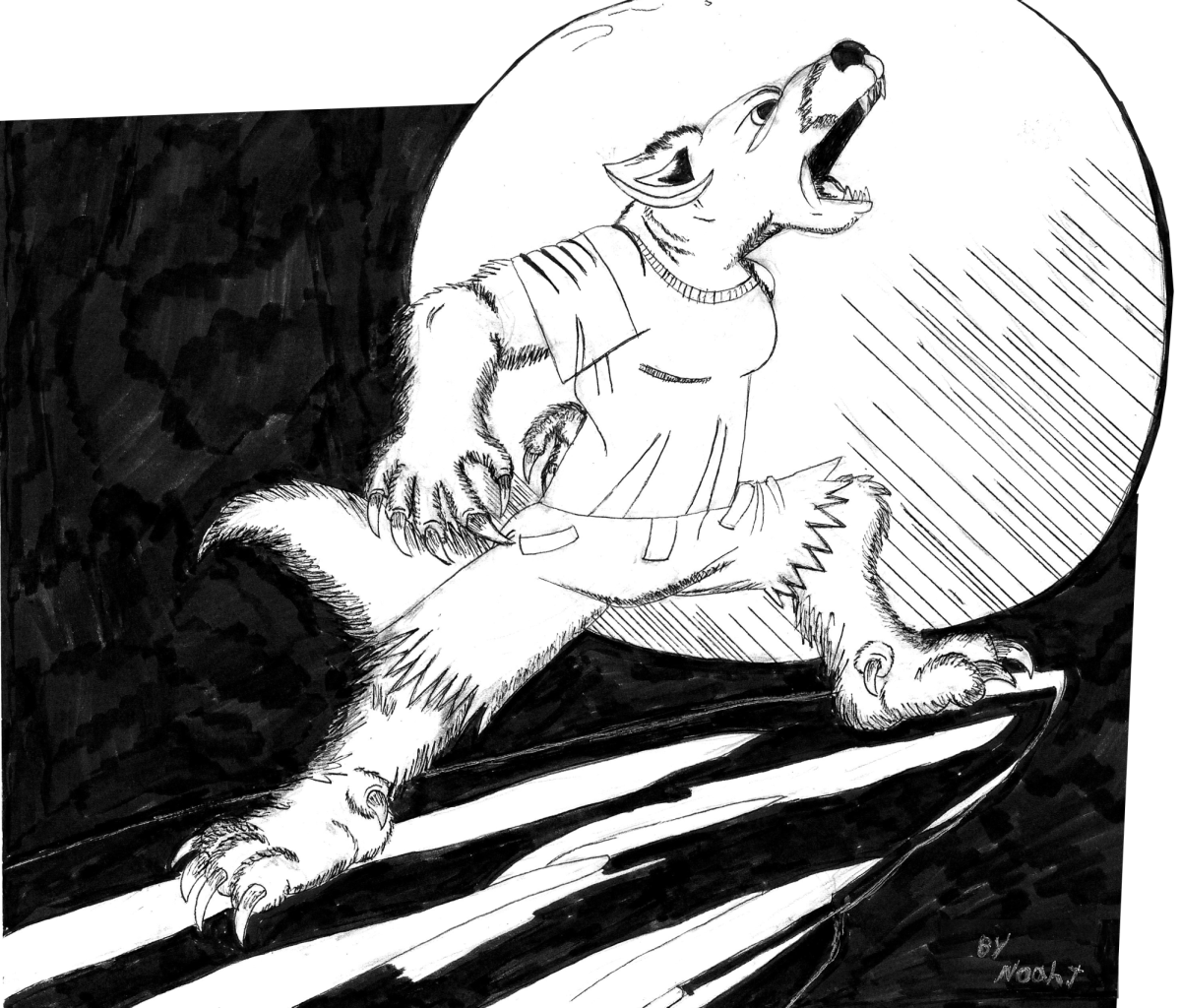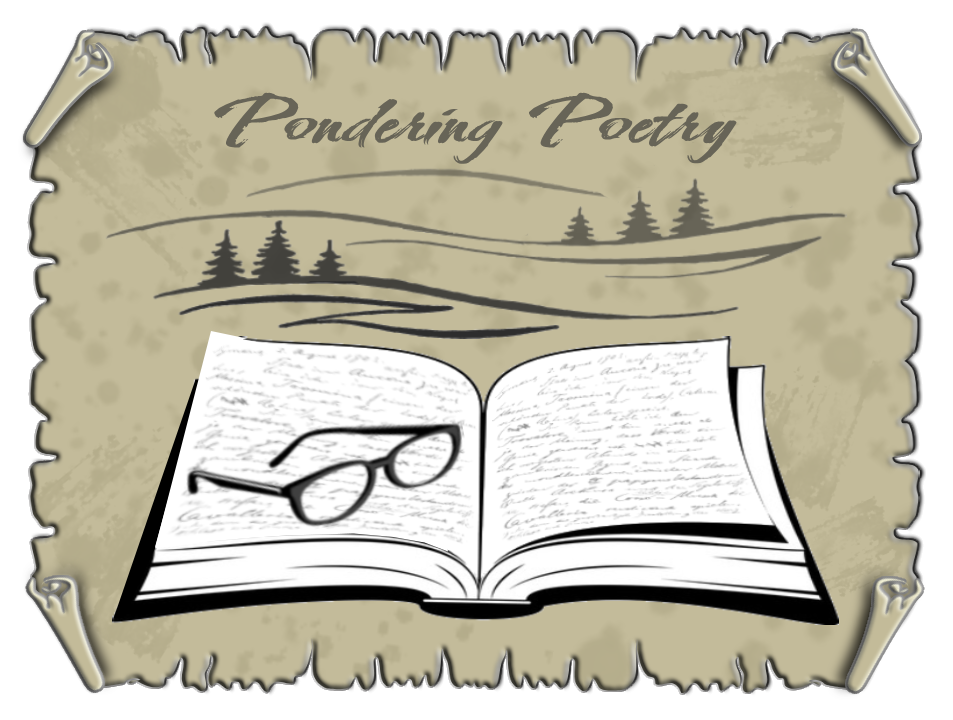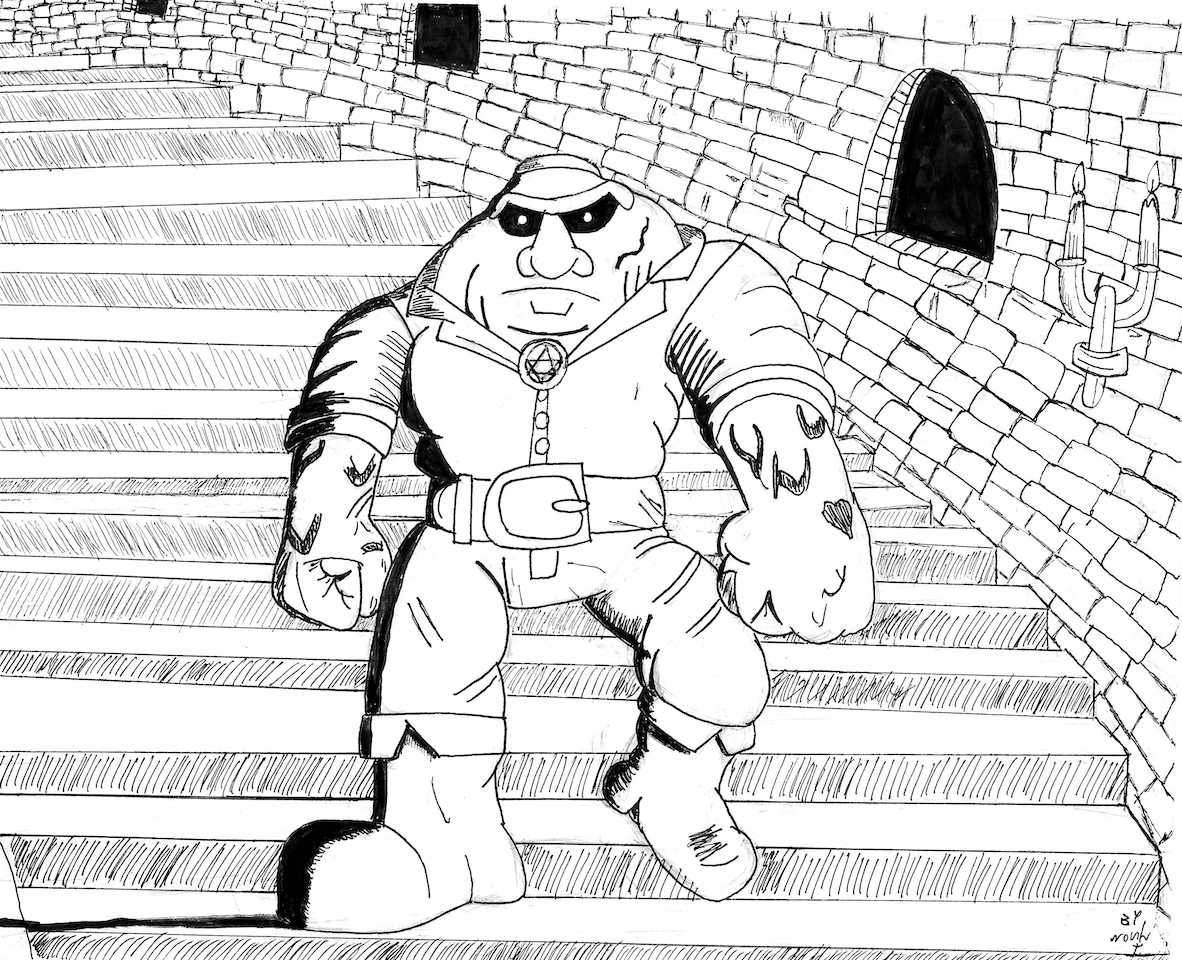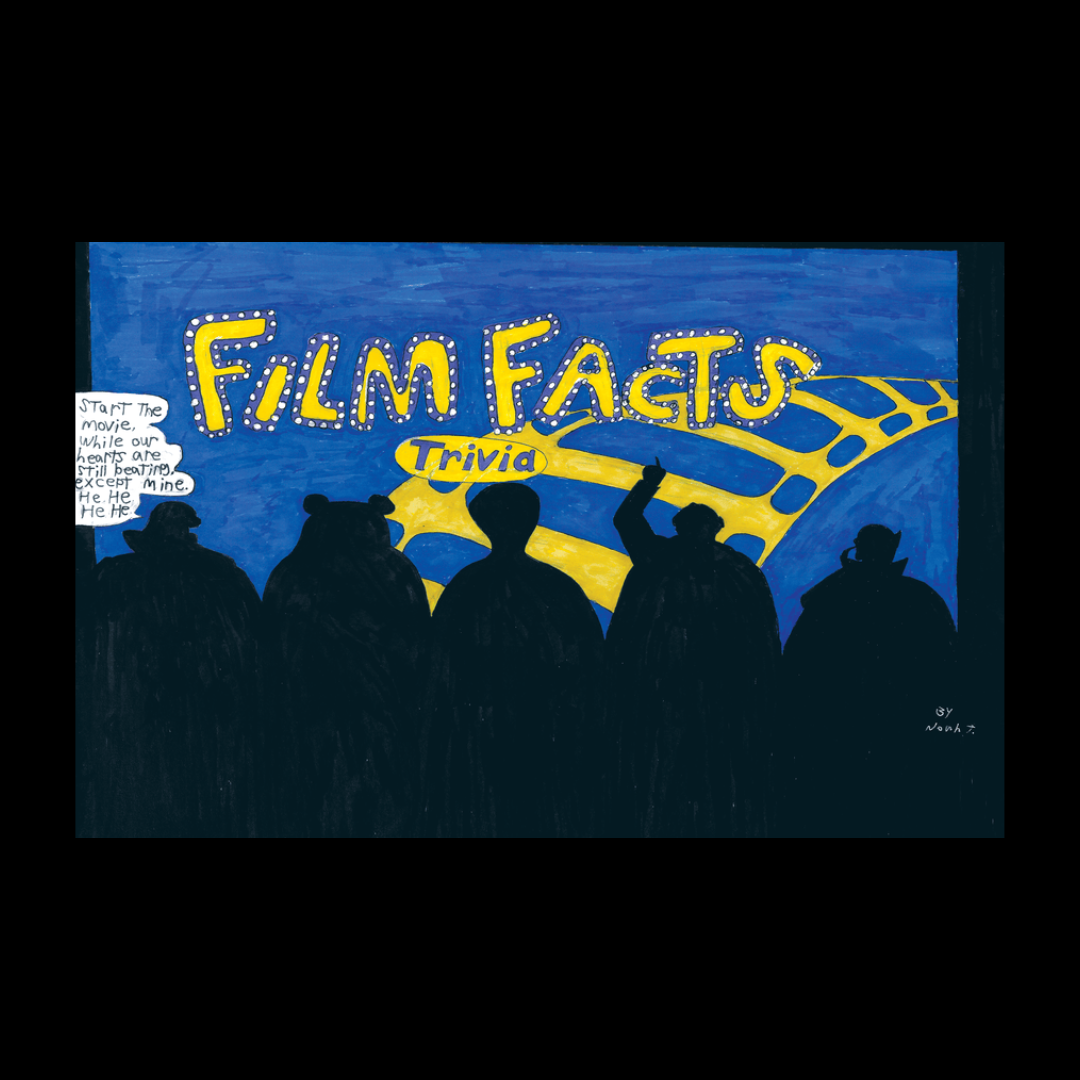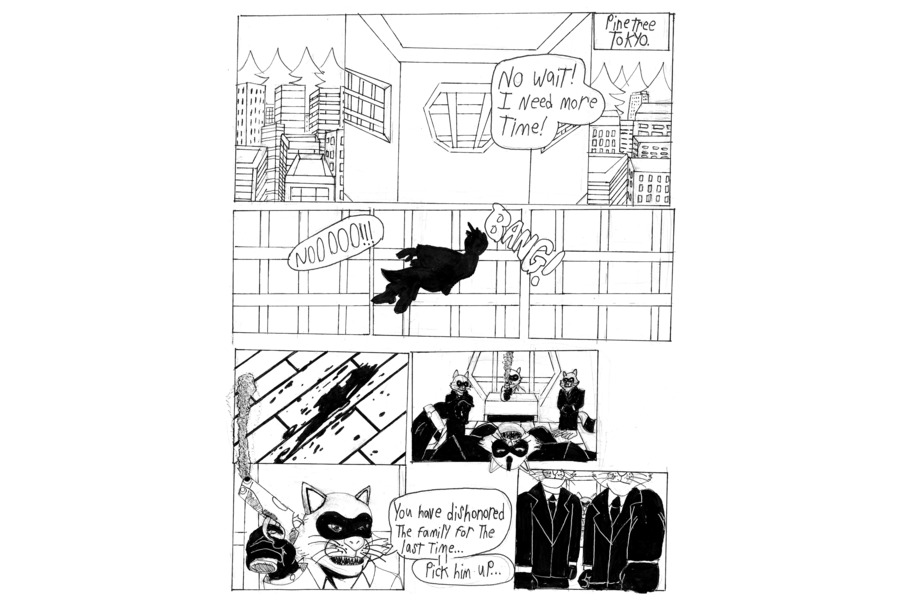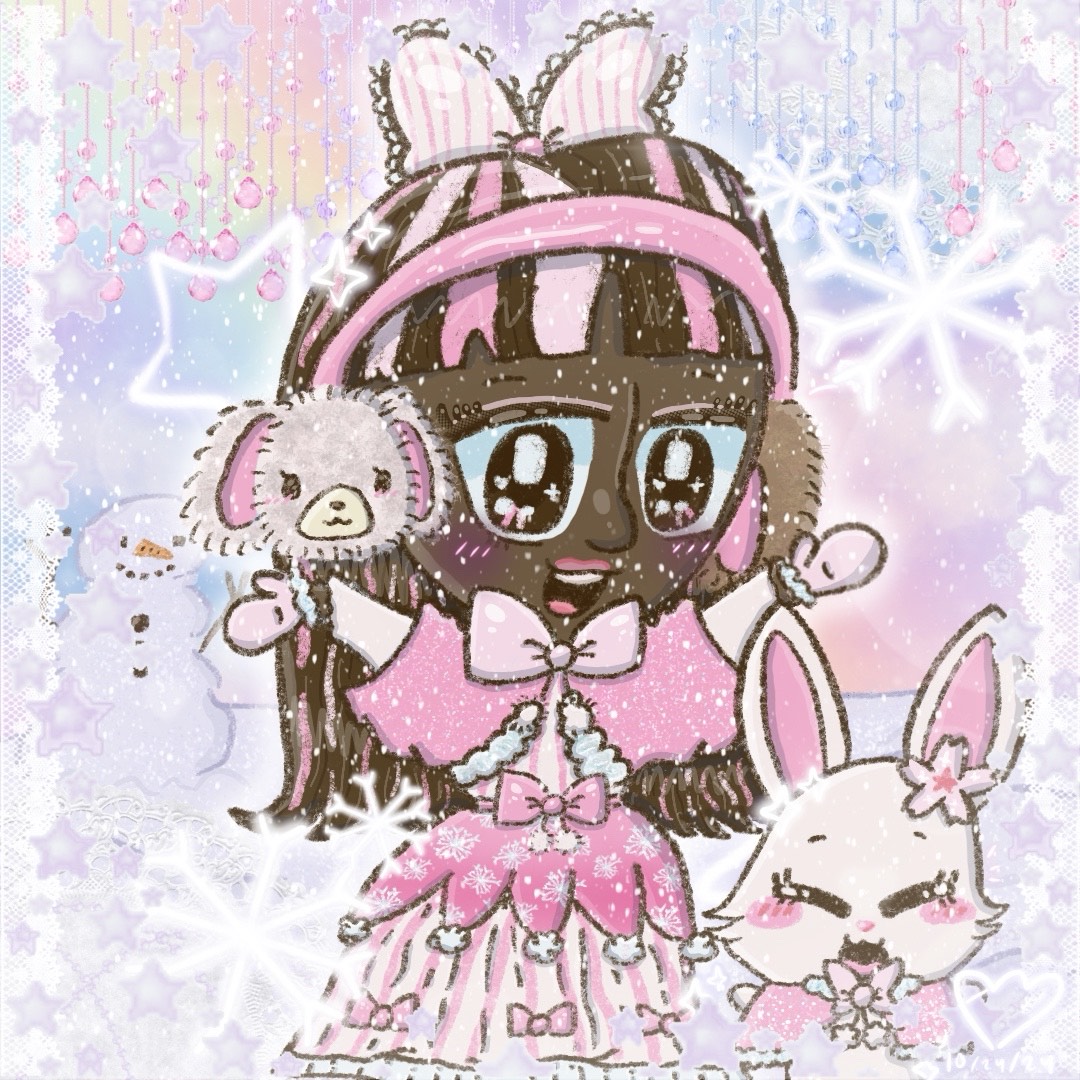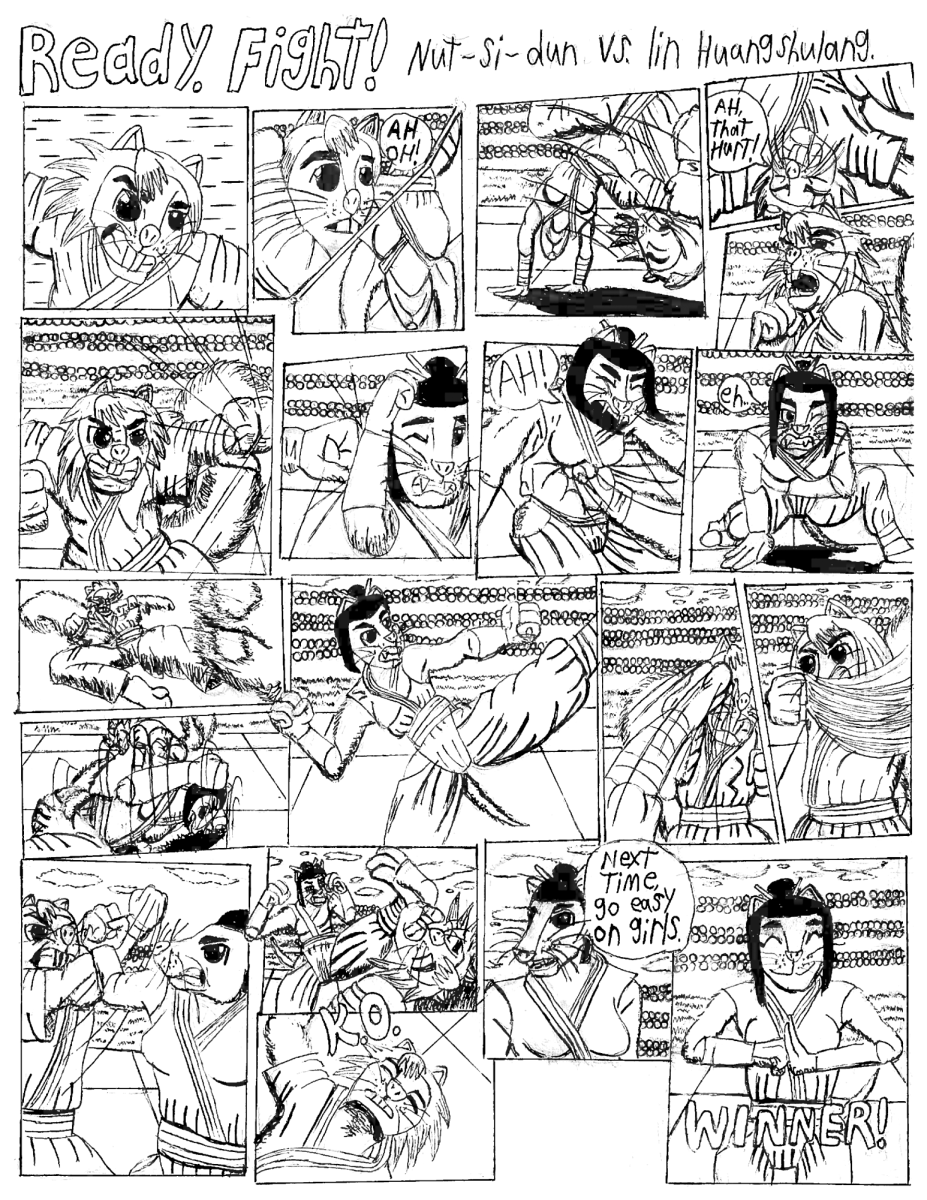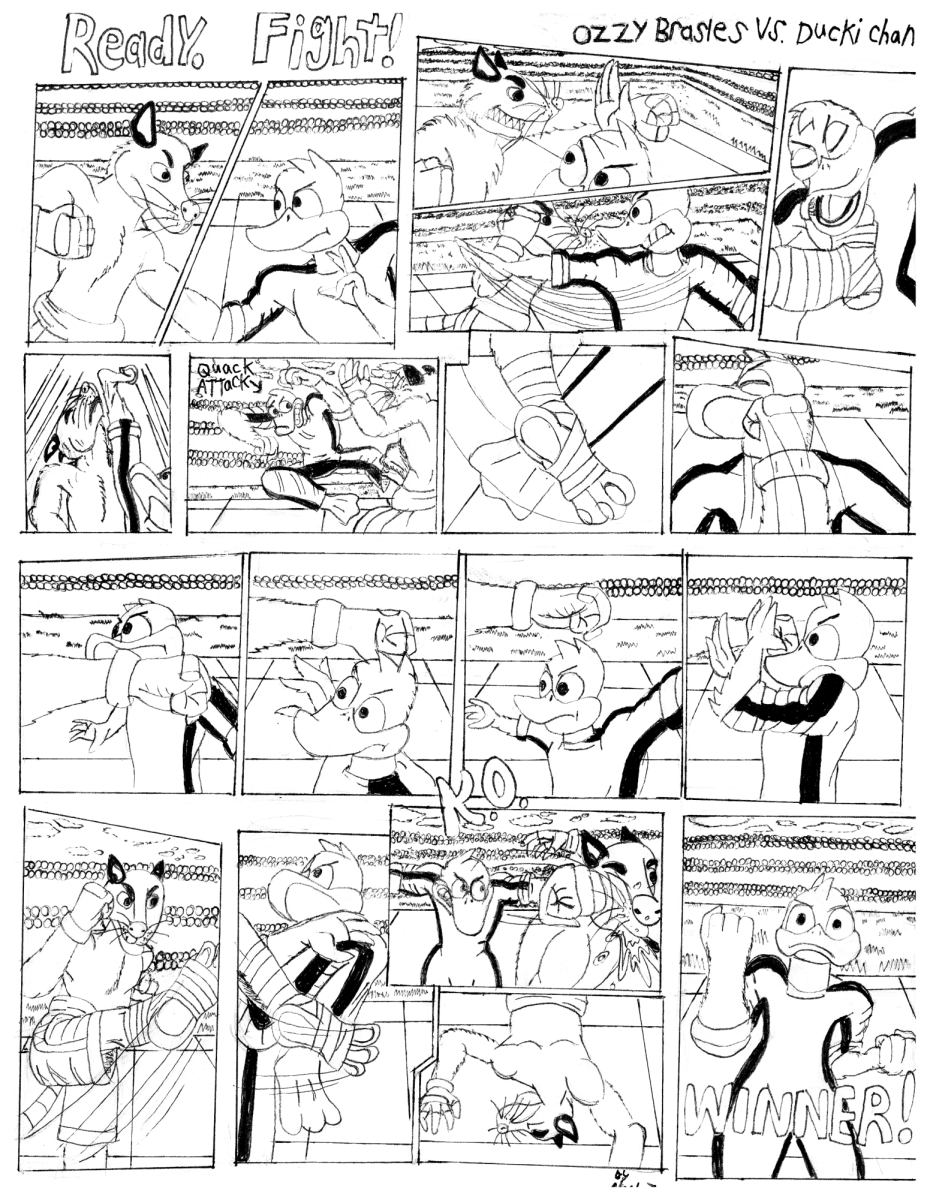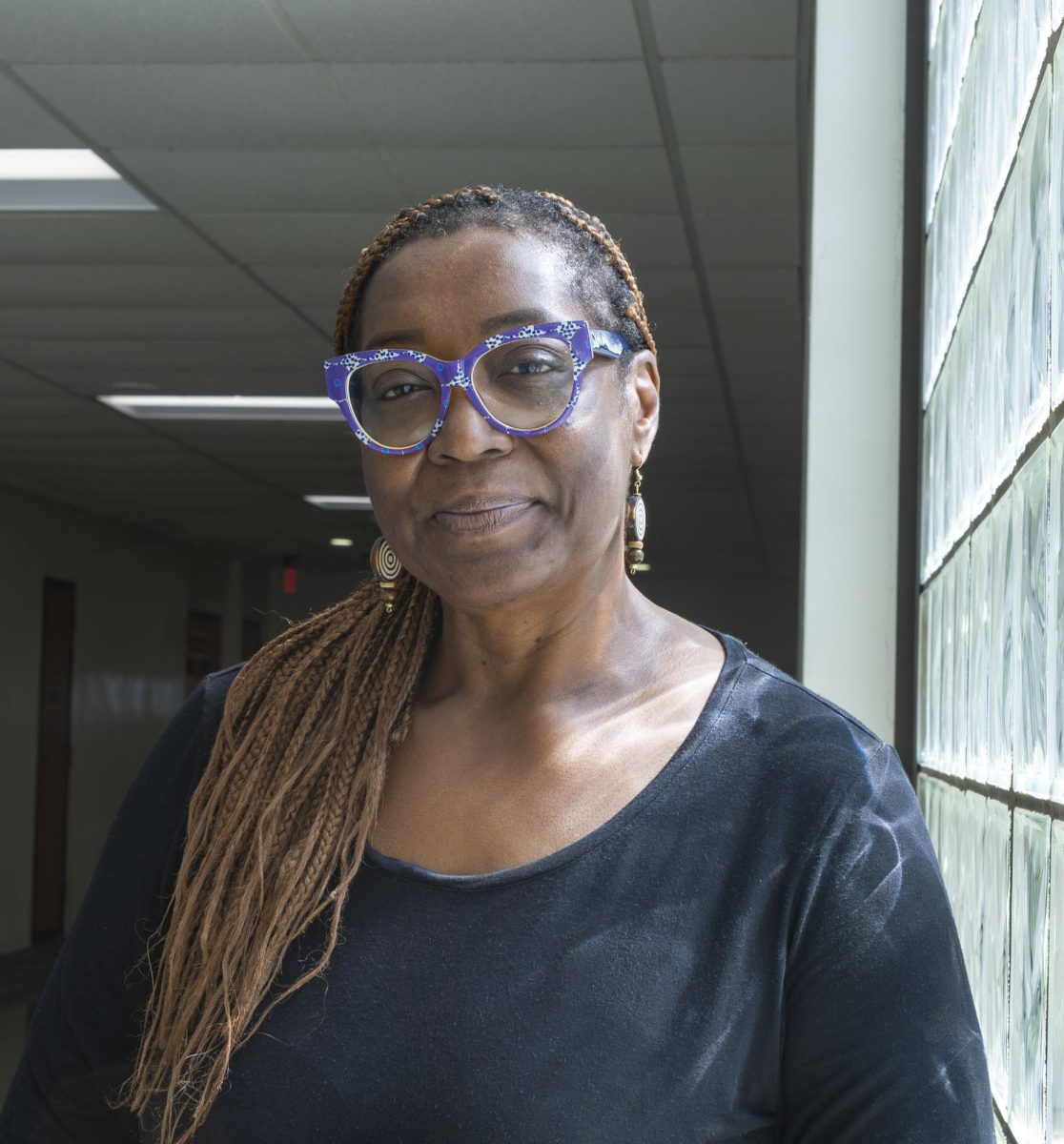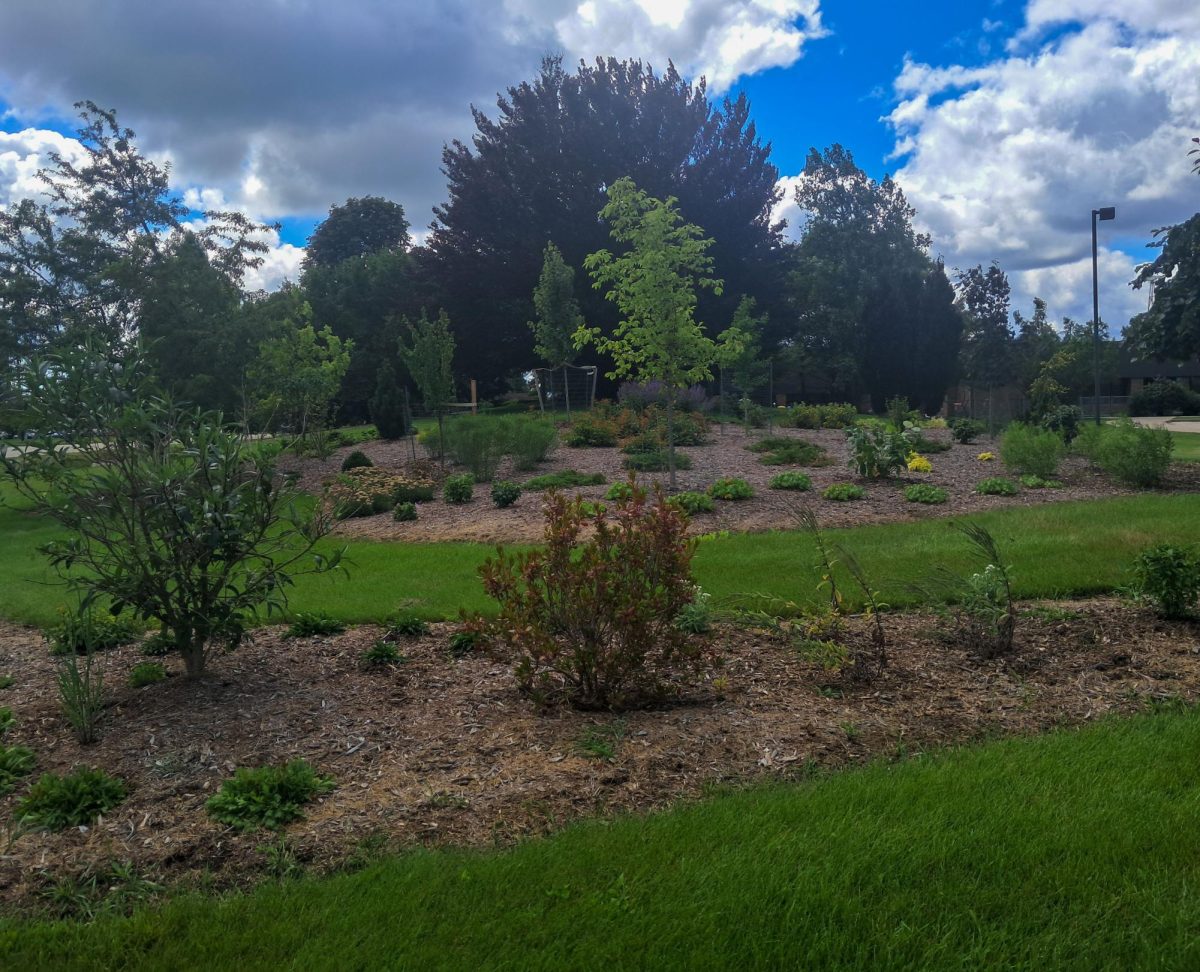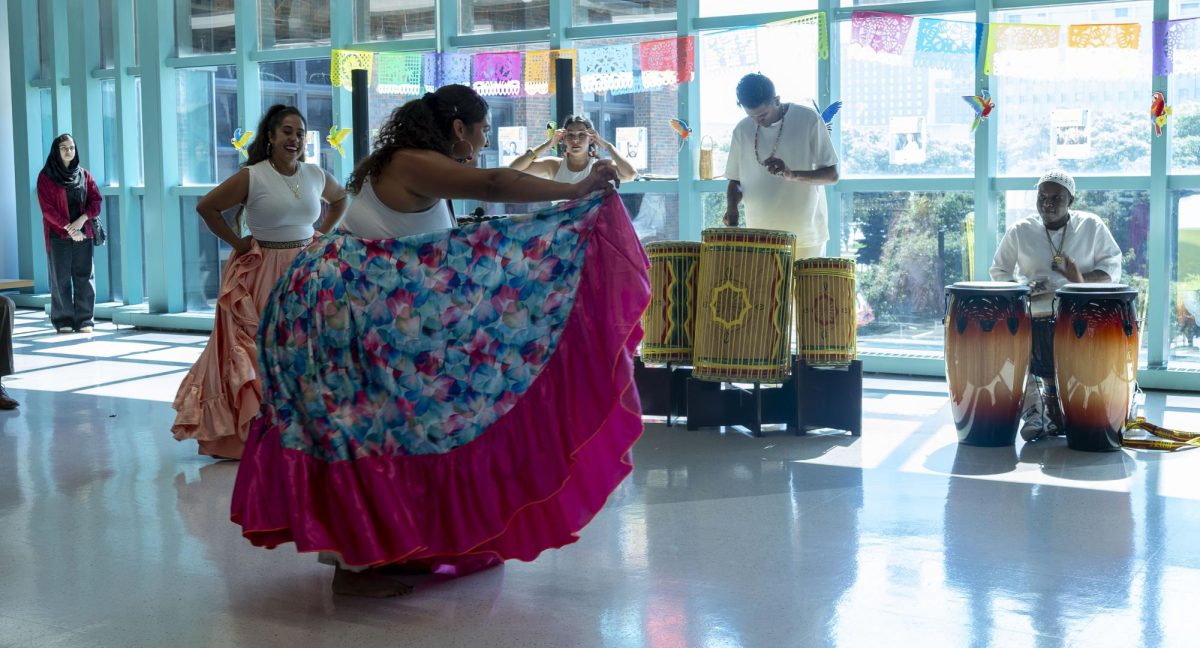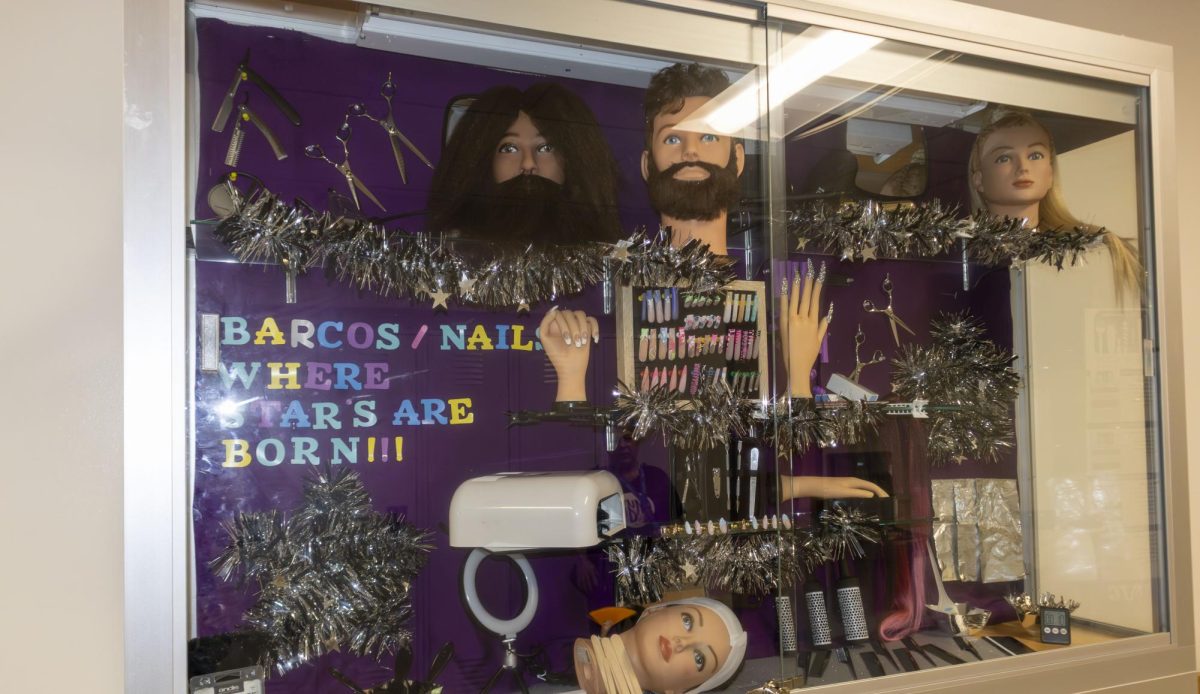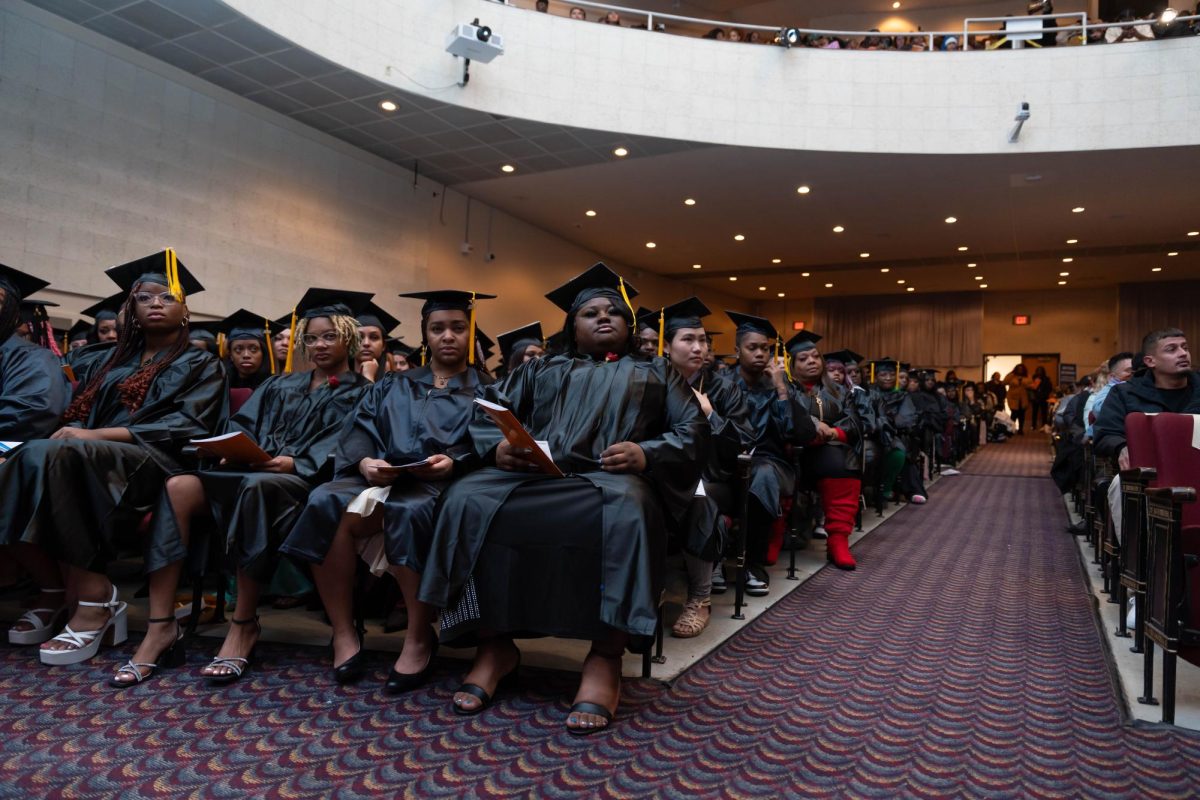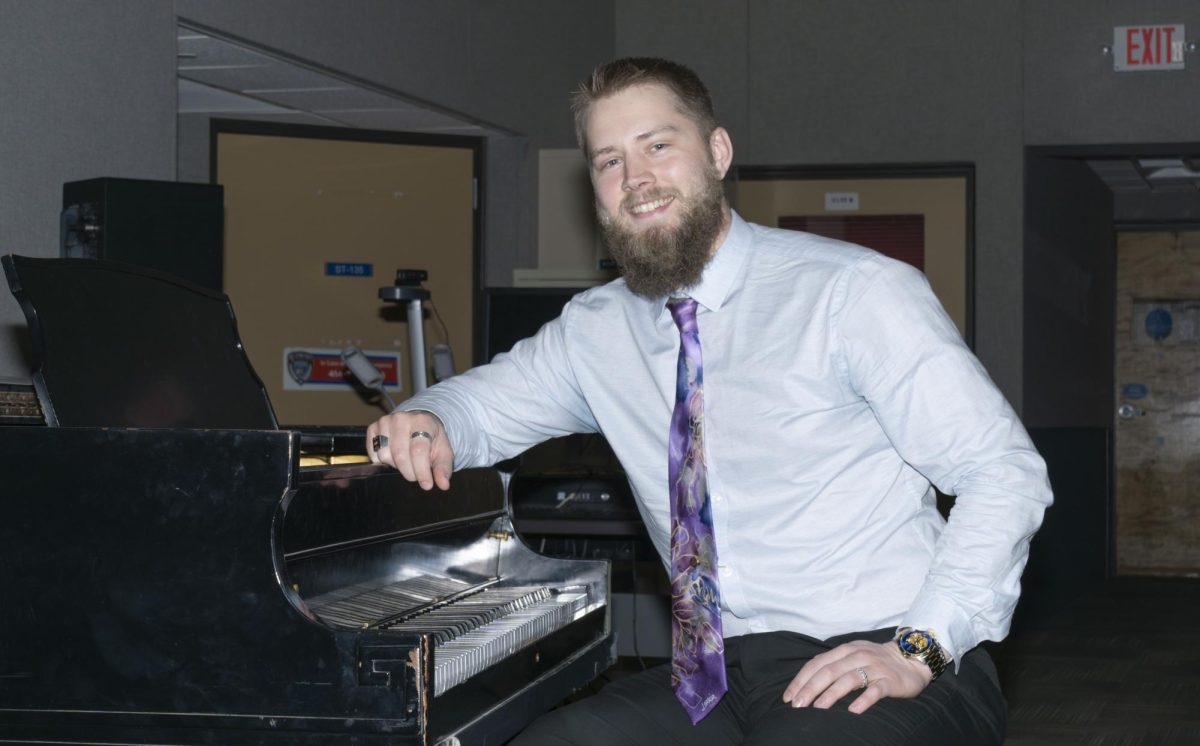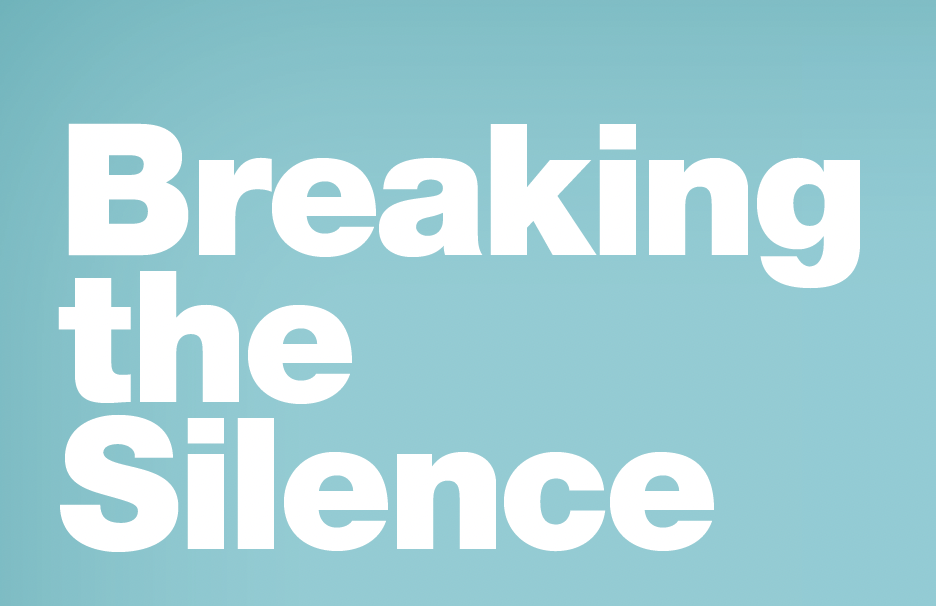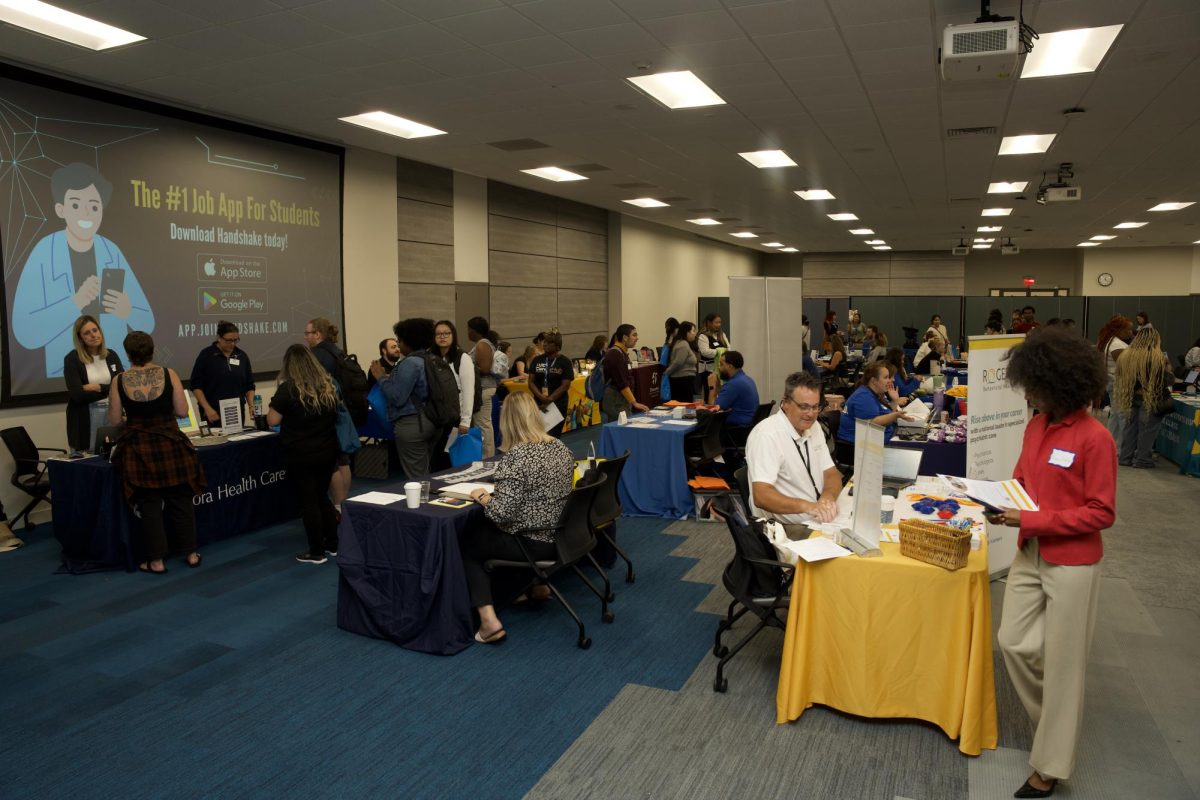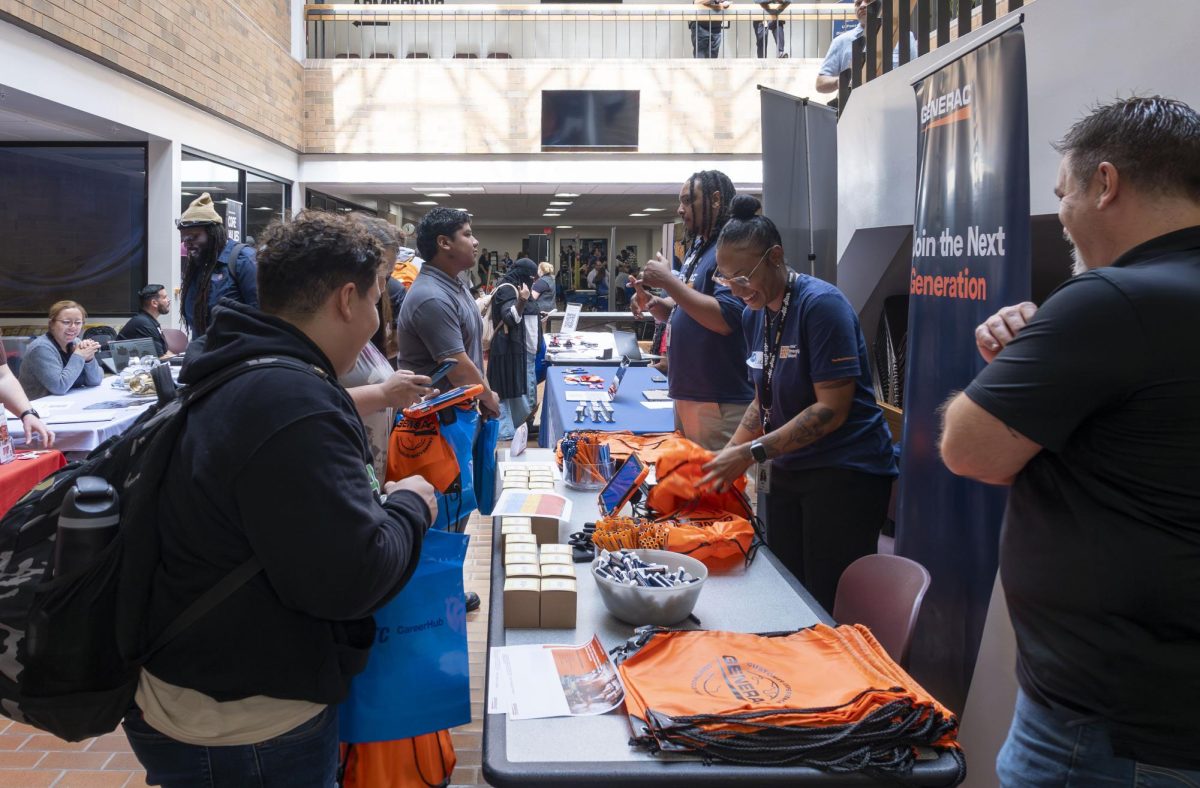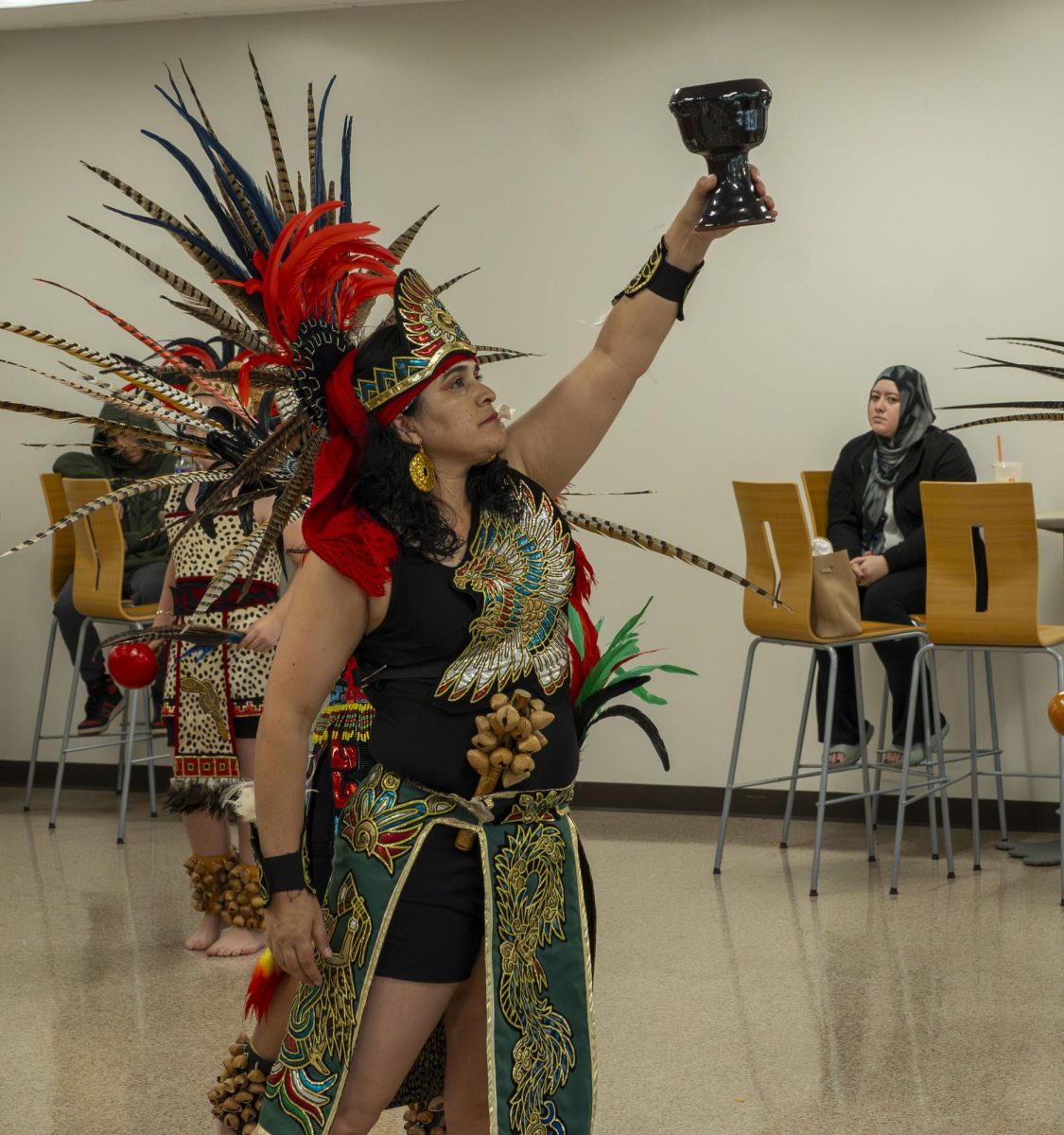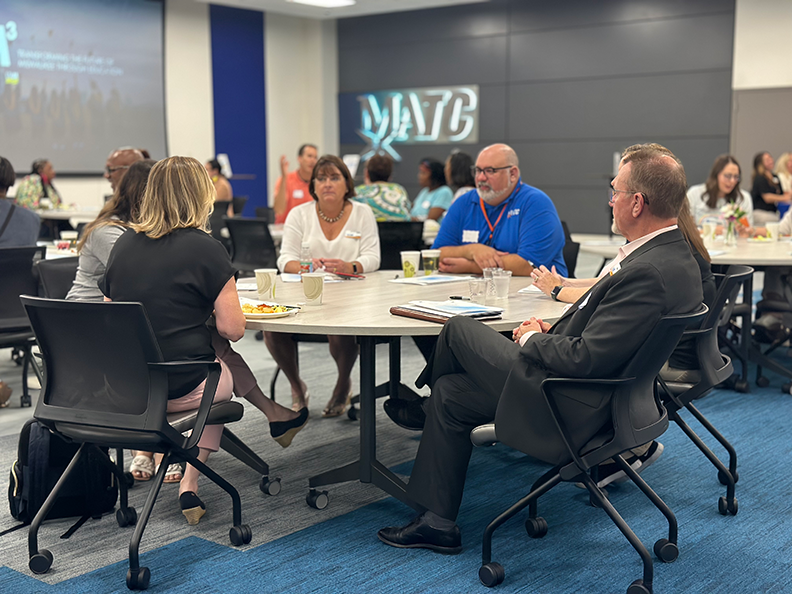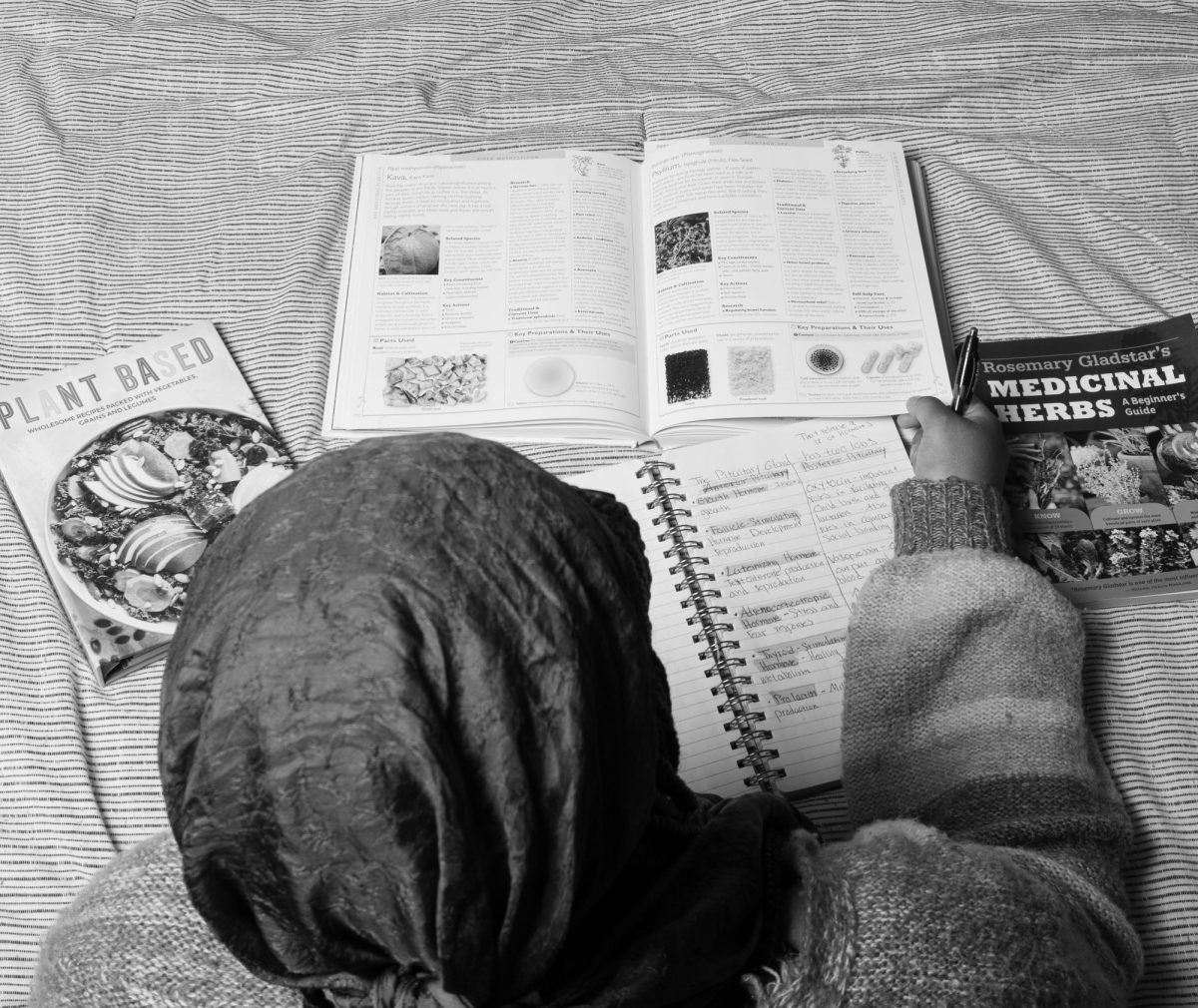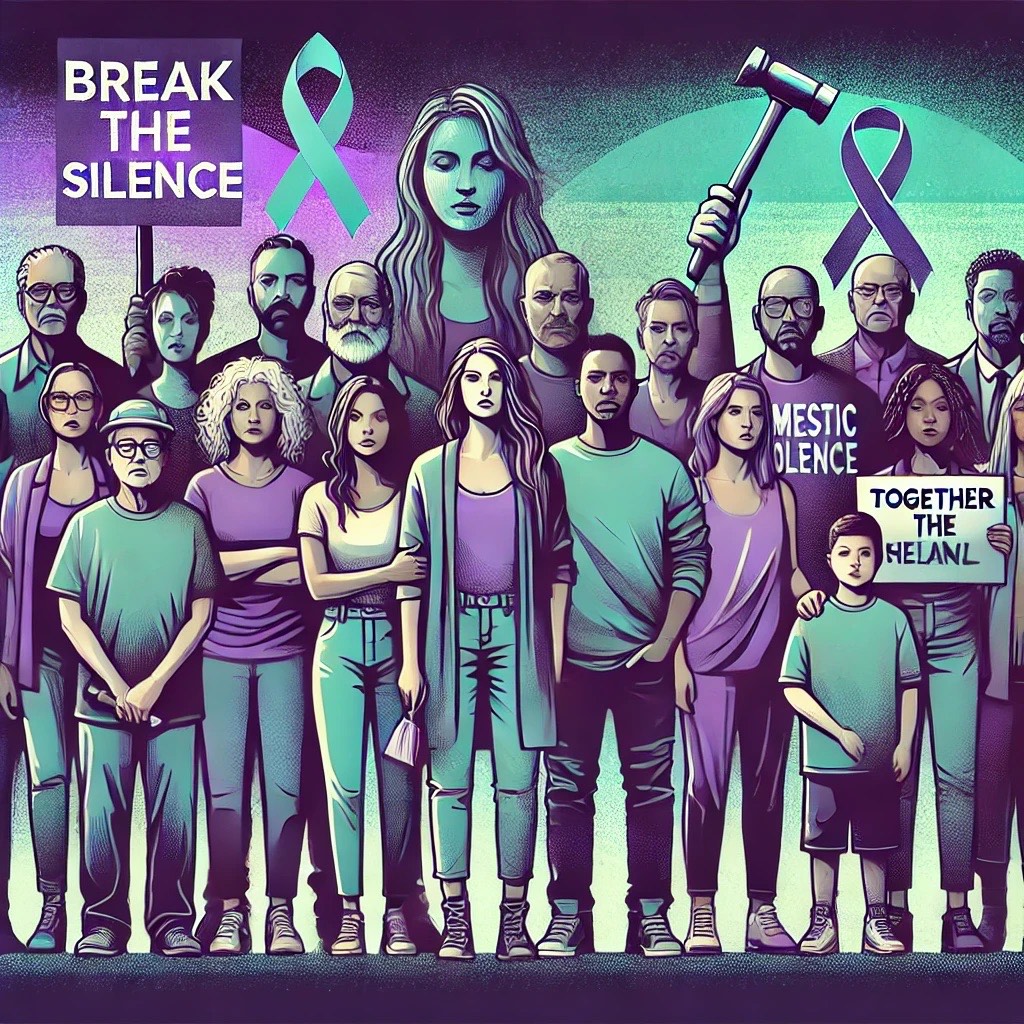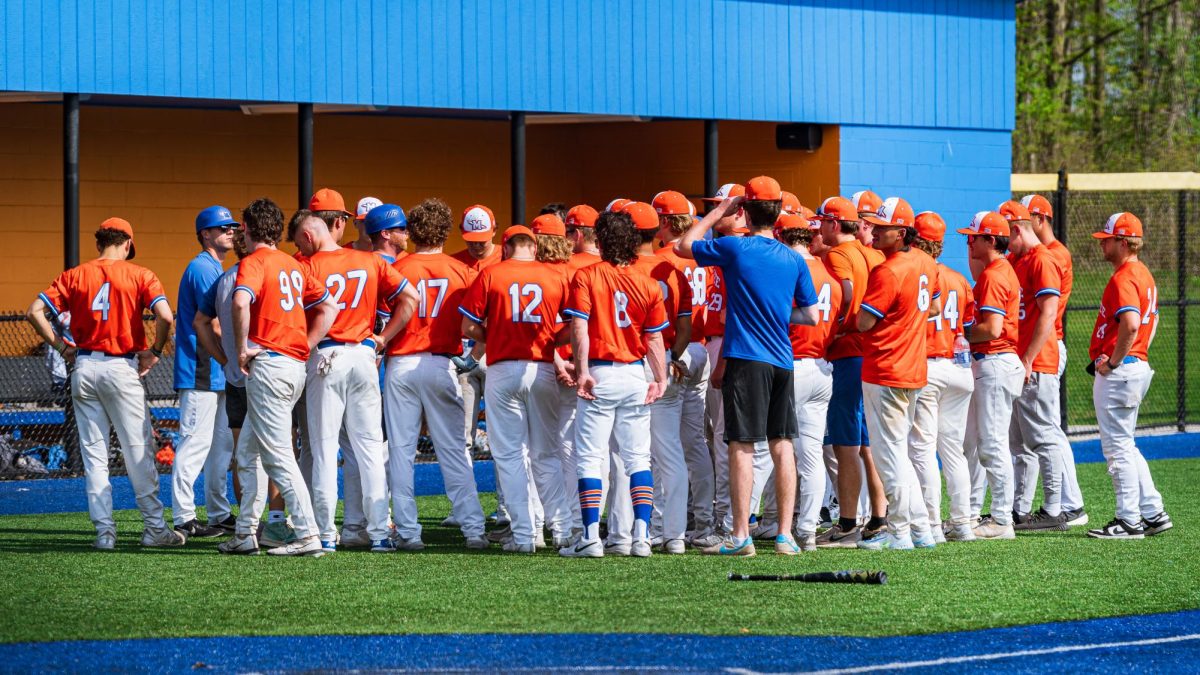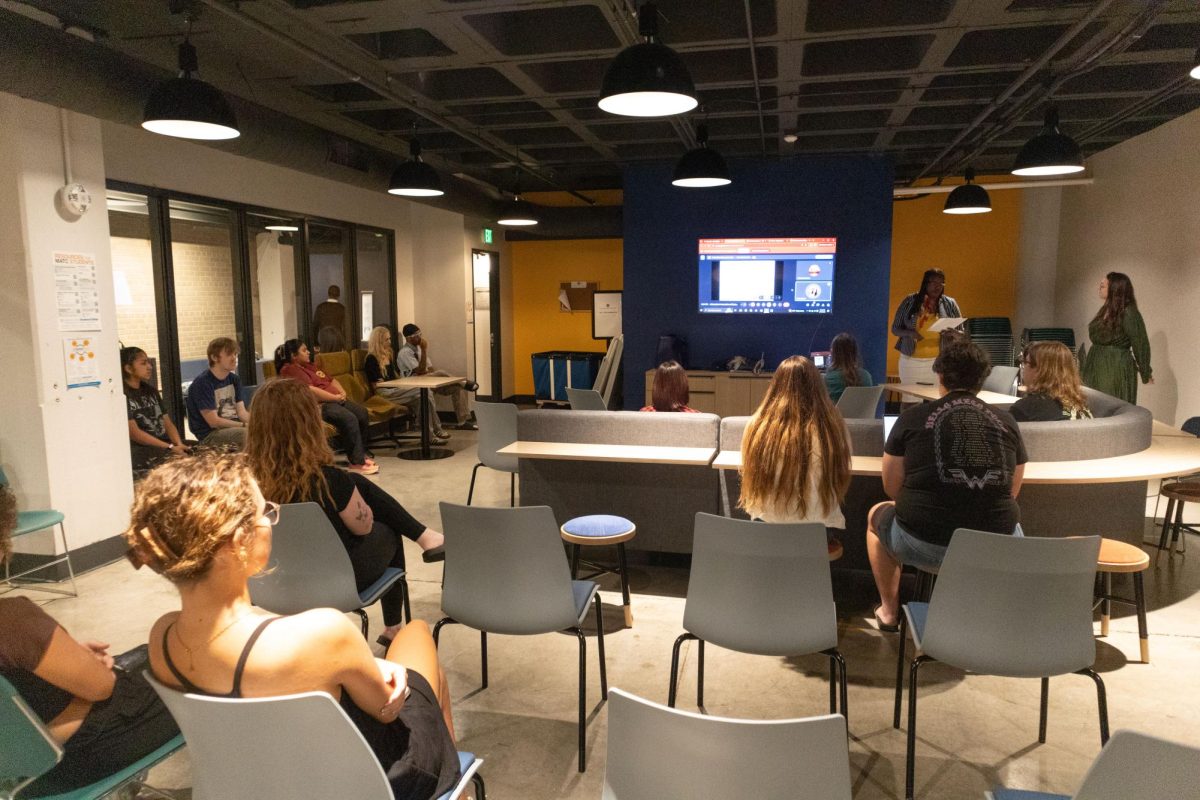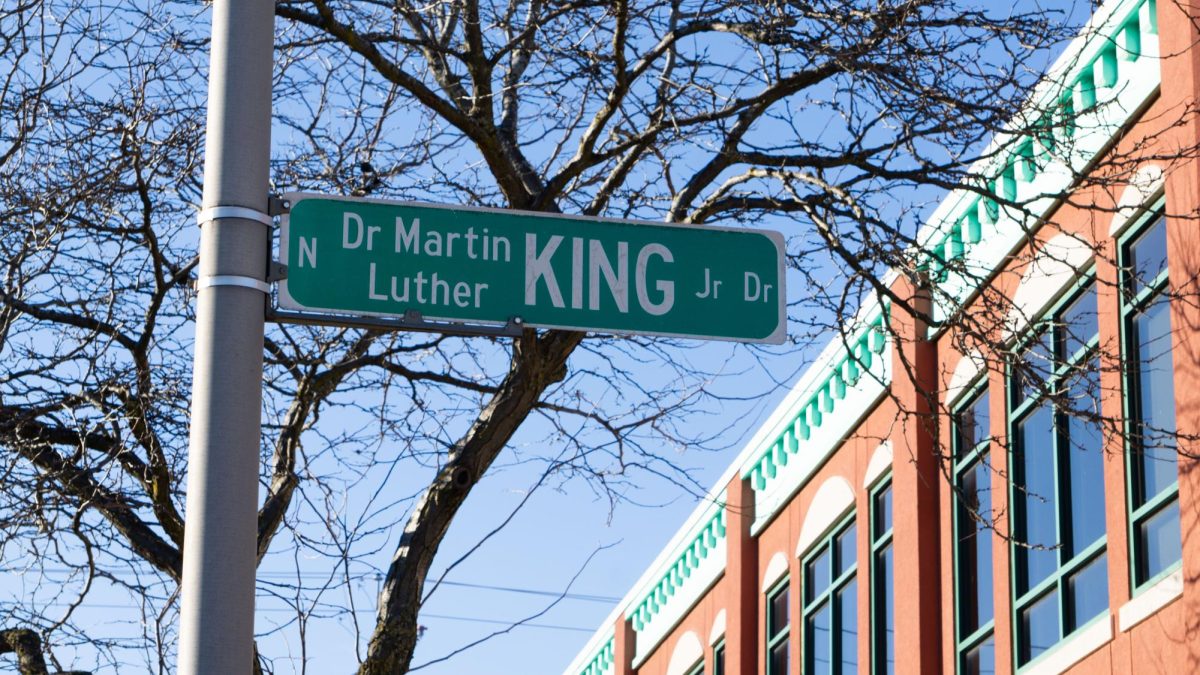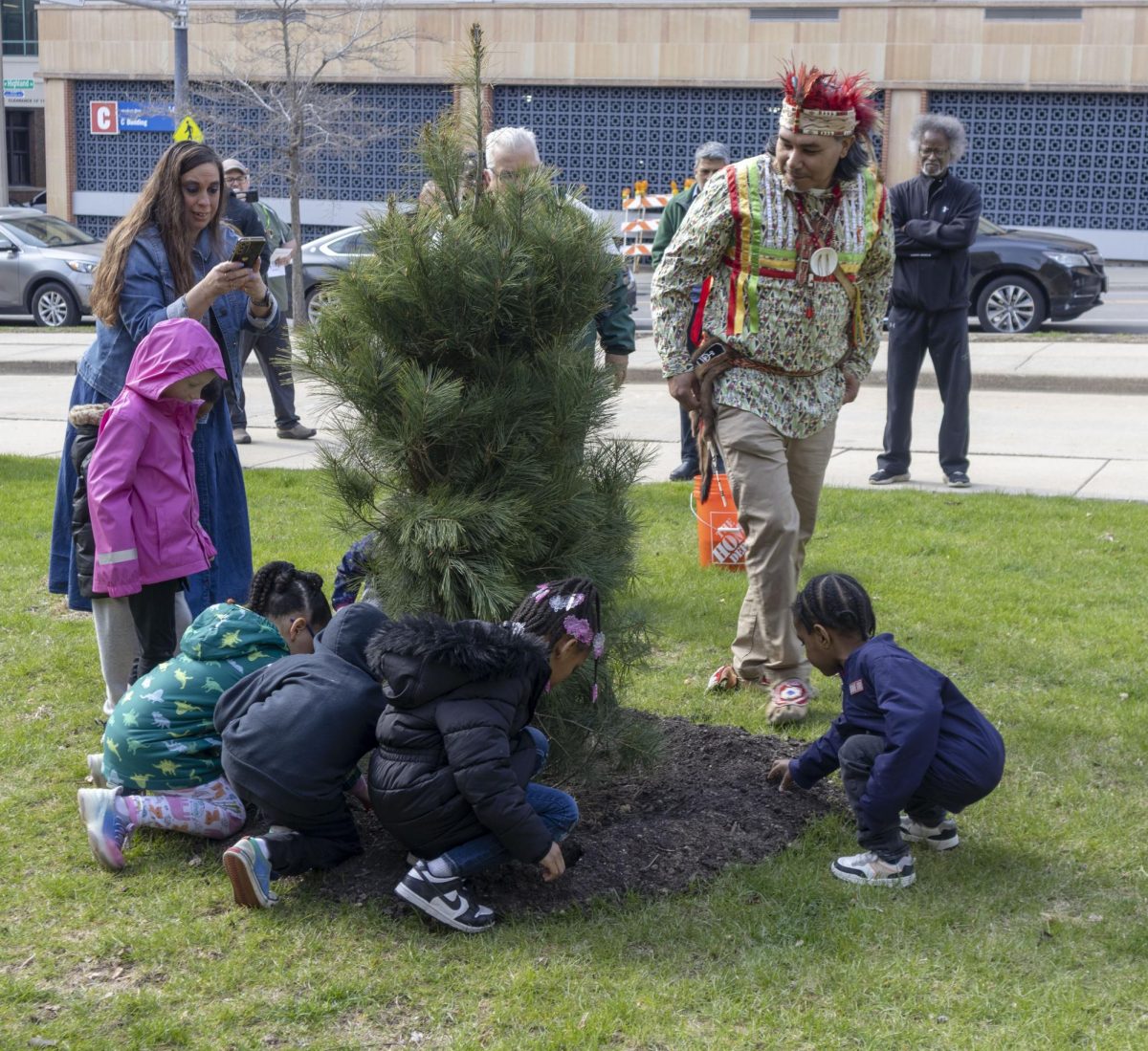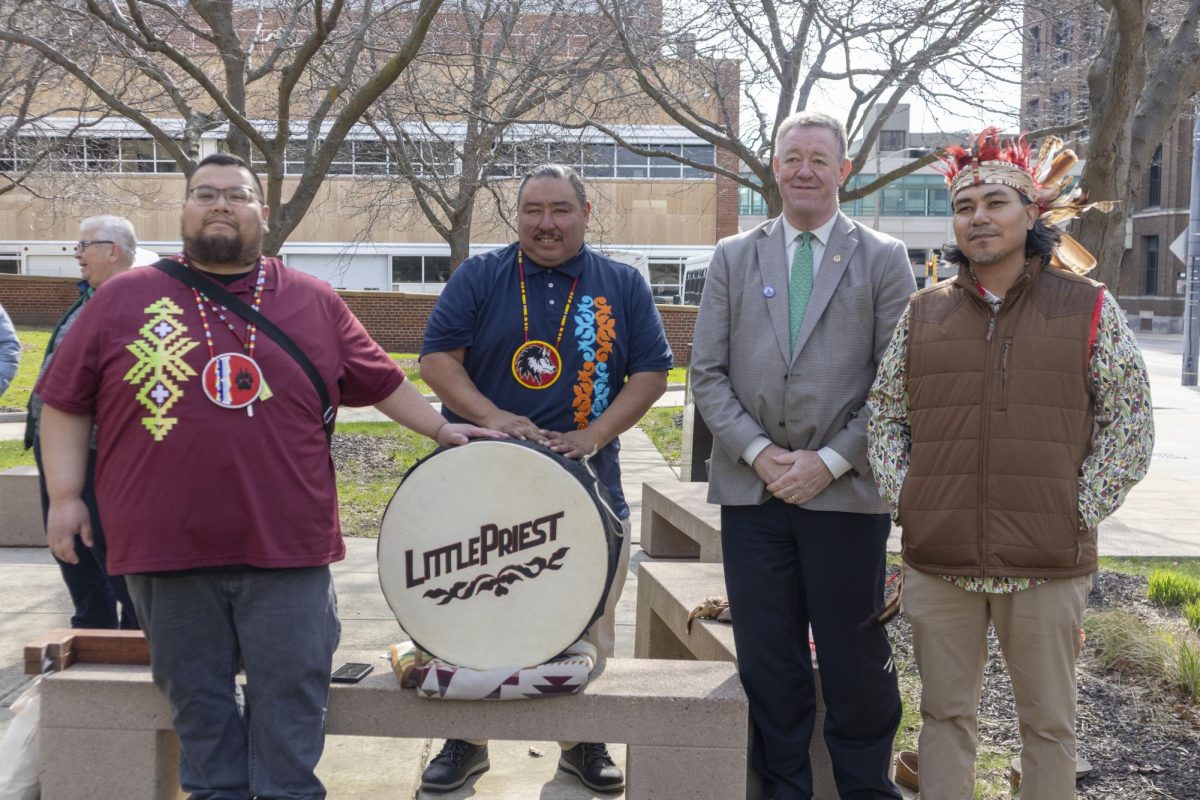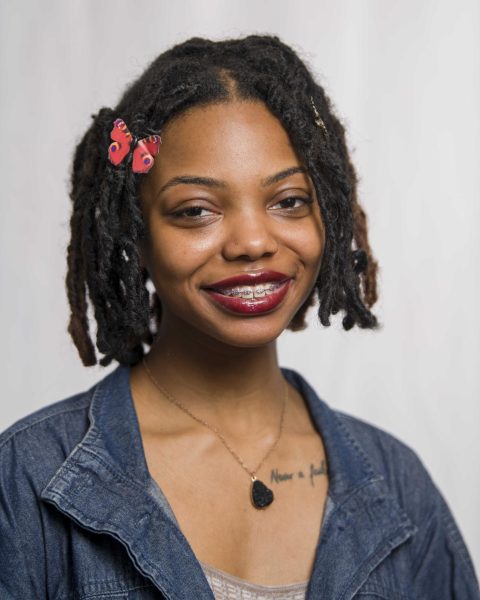After introducing himself in his native language, James Flores, Manager of tribal relations at the Milwaukee Public Museum translated, “What I said was: greetings everybody!” Flores continued, “I come from the United Nations, the original people of this continent. We are People of the Longhouse and we are made up of the original Five Nations.” Flores repeated his name in his native language, “I can’t properly translate my name into English. . . the last part translates to happy, because I’m with peace. That’s why we’re gathering here today, to recognize peace and to work together towards peace.”
Flores, speaker at the Peace Tree Planting Ceremony, stood in front of the H Building at the Downtown Campus. He told the Reader’s Digest version of a story of the formation of The Great Law of Peace, a thousand year old tale that would take days to tell in its entirety. It is the oral constitution of the Haudenosaunee (Six Nations) Confederacy. It establishes a foundation of governance, emphasizing peace, unity and the rights of the people. “There was democracy, and that was later the basis of the U.S. Constitution. It was documented that Benjamin Franklin came to our council choirs and saw their governments and structure and he modeled the U.S. constitution after this. This story I am about to tell is about the formation. And like today, there was a lot of dispute and anger. People were not trusting their neighbors, they were afraid to leave their communities, their villages. There were blood wars going on between the Five Nations that were endless.” he said. He shared the gruesome battle of a villager who went out to fight and attack a village. While he was away, another Nation came and attacked his village. When he came back, his family was killed.
He continued, “. . . As he walked around the land in mourning, he finally came to a body of water. There, he saw a prophet known as The Peacemaker on his boat. When he came up, the water moved and you could see these red shells known as wampum. The Peacemaker could tell that he was mourning, that he had pain in his heart. The Peacemaker took these wampum shells and wiped his eyes, and he wiped his ears, so he can hear this good message of peace. You know when you are about to cry and you get that lump in your throat? He took that shell and rubbed it by his neck, and that feeling went away. He was able to hear this message of peace, he was able to speak this message of peace. And The Peacemaker told the villager that he wanted him to be his messenger, to go out and talk to the other nations who are at war with each other. All this fighting has to stop, this bloodshed has to stop. They had to come together in unification.” The Peacemaker and the Messenger went and carried this message of peace to the Mohawk, the Oneida, the Cayuga and the Seneca. “And one by one, they convinced them to follow this Law of Peace. They accepted this message of peace. And then their last nation was the Onondaga. And their chief, who was this very mean man… He was the war lord of the largest war party, he had the most warriors. They went to him and they told him this message of peace, and how the other nations were willing to follow this, if they would join and stop fighting, it could be peace.”
The warlord said, “I’m content living like this, why would I change? I am happy like this.” And he had these special abilities where he could communicate with the animal world and he had these snakes living in his hair. His mind was crowded and he couldn’t hear this message of peace. So they left and they said we’ll come back, we’ll come back, we’ll be back, and we’ll carry this message of peace and you’ll want to join our Great Law of Peace. He said, “If you come back, I’ll do that. But if you don’t come back by the 1st, I will send my war party out to find you, and we will destroy this unification. Anyone who is following this Law of Peace.” So they went out searching and there was this woman. . . and she was known to have these special abilities of healing, where she could heal individuals. And they met with the woman and they said, “We have carried this message of peace to all these different nations and they all accepted it except for the war lord. He had some kind of medicine over him, where his mind is clouded, and he can’t hear this message of peace. We need you to heal him, so we could end this bloodshed, end these wars that are going on.” The peacemaker said to her, “If you help us, we will make you a plan mother, and you will be the woman that chooses the chiefs. And she will have the power to dehorn the chiefs when they are not fulfilling their obligations and duties. If you do this, we will create this world forever in our Great Law of Peace.” And she agreed to help. She went and traveled with them.
They met the war lord again, this time she laid her hands on him. She prayed and started speaking to him. And her words pierced his thoughts, it pierced his heart, and she was able to take the snakes out of his hair, and you can see him almost transform. He stood straight up and could hear this message of peace. And he said, “No, I will follow this Law of Peace.” The Peacemaker said to him, “If you do this, we will make the war lord one of our grand chiefs. And every chief to follow and your title will be your name and your name will live on forever.” The war lord said, “That’s good. We’ll do this, we’ll come together.” So they came together and they said, “We gather like this today, our fox can pierce the sky, and our creator can hear our words.” They took their white pine, and if you look at how their leaves are bundled, that’s to represent these five Nations: The Mohawk, the Oneida, the Cayuga, the Onondaga and the Seneca.
They planted the white pine and put their weapons of war underneath it as a symbol, saying they are putting down this war path, they are putting down this killing. They are going to come together, spread peace and they planted this Peace Tree. “And the roots would spread, and they would carry out. That’s more of the message we need today. With everything that is going on, there is conflict among neighbors, among communities, and today all weapons of war are negative thoughts that turn into actions, greed, racism, violence, these are weapons of war. And that our youth are here today, a great chief sitting there said, ‘Let us put our thoughts together, and see what life we can make for our children.’ That’s what we are doing today, that is our intent that we are putting out today with the planting of this peace tree. When we come together like this, I think this is how we start. It’s little actions like this that have great impacts.”
This very condensed summary of the story touched the heart of everyone. With that, the speaker asked the native singers to perform a “traveling song.”
Seizing the opportunity to speak with Flores, a true Native American, about the Peace Tree and the arrowheads that have been planted at the base of the peace tree in front of the H building of the downtown campus, here was his response:
Can you tell me a little bit more about what we did today?
“Today, we gathered here to remember the meaning and significance of this historical account of how we come together as a community, as a group and put away these negative thoughts, these negative feelings and come together for peace. To work together towards peace.”


